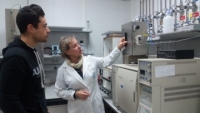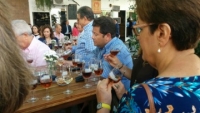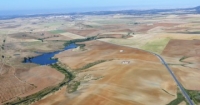La noche del 31 de diciembre de 1999 medio mundo andaba aterrorizado por la posibilidad de que los sistemas informáticos del planeta colapsaran. El miedo al llamado “efecto 2000” provocó todo tipo de disparates y excentricidades, pero lo cierto fue que no ocurrió nada. El único colapso conocido del inicio de este siglo fue el que sufrieron miles de colonias de abejas de diferentes partes del mundo. Estos insectos, responsables de la supervivencia de numerosos cultivos gracias a su labor polinizadora, empezaron a desaparecer de sus colmenas y a adoptar actitudes que poco tenían que ver con su conformista función de obreras.
Investigadores de la Universidad de Córdoba diseñan una nueva estrategia de producción de ecodiésel
Escrito porEl diésel se enriquece con aditivos obtenidos por catalizadores sólidos menos contaminantes
Escrito porCuando alcancemos la mitad de este siglo, se prevé que en los países desarrollados se producirán 14 billones de litros de biodiesel al año.
Filólogos y traductores preparan una nueva app internacional sobre el lenguaje del vino
Escrito porBlancos, tintos, rosados o claretes; cosecha, crianza, reserva o gran reserva; de mesa, del país, espumoso o tranquilo, para mesa o para postre…
La Universidad de Córdoba incrementa su presencia en proyectos internacionales de investigación
Escrito porEl año 2016 se ha cerrado en la Universidad de Córdoba con un importante aumento de la presencia de sus equipos de investigación en estudios científicos internacionales, según se desprende del informe presentado por la Oficina de Proyectos Internacionales (OPI) de la UCO, dependiente del Vicerrectorado de Innovación, Transferencia y Campus de Excelencia.
Un equipo internacional recupera el patrimonio arqueológico, faunístico y botánico del territorio de la antigua ciudad romana de Mellaria
Escrito porHace más de 2000 años, en el camino entre dos de las ciudades más destacadas del Imperio Romano, Corduba Colonia Patricia y Emérita Augusta, existió una ciudad “de no menor nobleza”, según transmite Plinio el Viejo, y de la que fue oriundo Cayo Sempronio Sperato, máximo responsable del Templo de la actual calle Claudio Marcelo en Córdoba capital.





